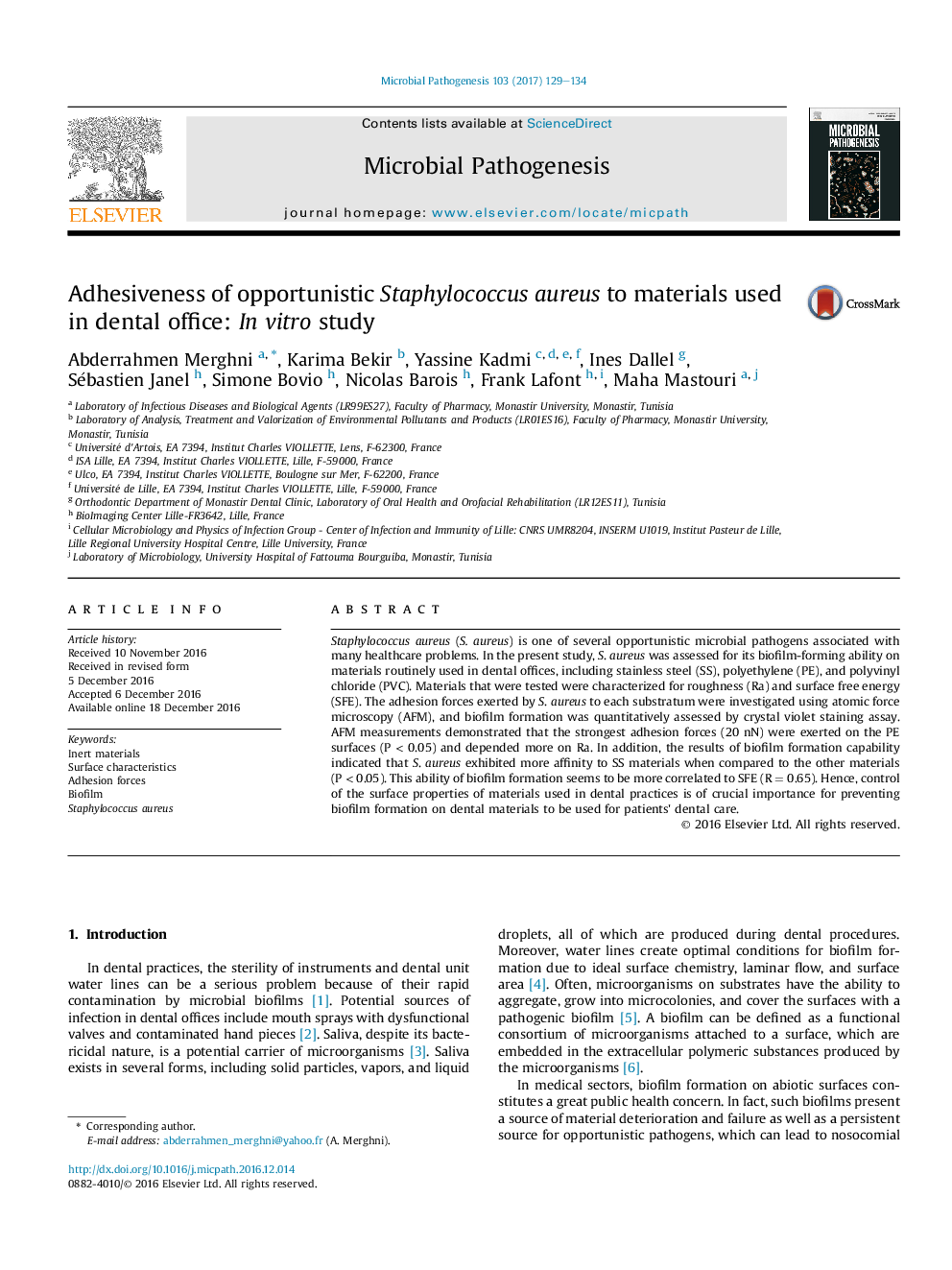| Article ID | Journal | Published Year | Pages | File Type |
|---|---|---|---|---|
| 5673784 | Microbial Pathogenesis | 2017 | 6 Pages |
â¢Various materials used in dental offices were characterized for roughness and surface free energy.â¢Adhesion forces and biofilm formation capability by opportunistic S. aureus on tested materials were investigated.â¢The strongest adhesion forces of S. aureus were exerted on PE materials which have the roughest surface.â¢Biofilm formation ability of S. aureus was correlated strongly to surface free energy, with high affinity to SS materials.
Staphylococcus aureus (S. aureus) is one of several opportunistic microbial pathogens associated with many healthcare problems. In the present study, S. aureus was assessed for its biofilm-forming ability on materials routinely used in dental offices, including stainless steel (SS), polyethylene (PE), and polyvinyl chloride (PVC). Materials that were tested were characterized for roughness (Ra) and surface free energy (SFE). The adhesion forces exerted by S. aureus to each substratum were investigated using atomic force microscopy (AFM), and biofilm formation was quantitatively assessed by crystal violet staining assay. AFM measurements demonstrated that the strongest adhesion forces (20 nN) were exerted on the PE surfaces (P < 0.05) and depended more on Ra. In addition, the results of biofilm formation capability indicated that S. aureus exhibited more affinity to SS materials when compared to the other materials (P < 0.05). This ability of biofilm formation seems to be more correlated to SFE (R = 0.65). Hence, control of the surface properties of materials used in dental practices is of crucial importance for preventing biofilm formation on dental materials to be used for patients' dental care.
